
 It all seems so very long ago now. That’s one of the disadvantages of having a monthly publication. If you hit the wrong point in the cycle, everyone else has had their say before you. Of course I did have my say on my blog. You can find my thoughts on the Hugo Award Ceremony fiasco here, and some more general thoughts on why such things happen here. And if you are a serious drama junkie then Cora Buhlert has an enormous round-up of reactions to the Hugo Ceremony here.
It all seems so very long ago now. That’s one of the disadvantages of having a monthly publication. If you hit the wrong point in the cycle, everyone else has had their say before you. Of course I did have my say on my blog. You can find my thoughts on the Hugo Award Ceremony fiasco here, and some more general thoughts on why such things happen here. And if you are a serious drama junkie then Cora Buhlert has an enormous round-up of reactions to the Hugo Ceremony here.
Mostly the whole affair has convinced me that WSFS has to change, and change quickly (well, as quickly as it can), because it simply cannot go on being run by volunteers who are expected to behave as if they are full-time professional staff. Every Worldcon has drama behind the scenes. Every Worldcon has staff who mess things up, sometimes by accident, sometimes though being overloaded, sometimes through ignorance, and sometimes through malice. But it is always WSFS and Worldcon that gets blamed when things go wrong because it is assumed that there must be a “Them” who are in charge, are probably making a fortune from being in charge, and who ought to have done better.
One thing that struck me this year is the claim that WSFS is an oligarchy. The assumption was that because you have to pay to be a member and to vote in the Hugos and Site Selection, then rich people were in charge. But that’s not how it works at all. WSFS is an oligarchy, but where the money comes in is being able to travel to Worldcon every year, paying a fortune in air fares and hotel bills, so that you can participate in running the event and sit in the damned Business Meeting for hours on end. Also, to get to run a Worldcon, you have to win a bid. To my knowledge, no one has ever won a bid by throwing money at Site Selection, buying memberships for people who will vote the way you want. But in order to win a bid you have to spend an absolute fortune on travel to other conventions to promote the bid. And that is how people who have money end up in charge.
So WSFS needs to change. It needs to stop being a game for those people who can afford to go to Worldcon every year. But change may also happen in other ways, because the current situation with international politics and the pandemic is making in-person events less feasible, and virtual ones more popular. So I’m going to spend the rest of this report talking about how CoNZealand managed the virtual side of the convention.
The thing that became immediately obvious from attending CoNZealand was that it was using a whole bunch of software systems cobbled together. That wasn’t their fault. A good software platform for an event the size of Worldcon simply doesn’t exist. We haven’t needed it up until now. I’m sure that a whole bunch of companies are working hard on developing new features for their platforms, but right now we are stuck with jerry-built systems.
Most obviously, CoNZealand was using Grenadine for scheduling programming, as Worldcons have been doing for many years now. It was using Zoom to deliver the actual programme items. It was using Discord for the social side of the convention. It had to integrate with The Fantasy Network for streaming and archiving the programme. I understand that Jitsi was being used to provide the chat functions for the Dealers’ Room. There may have been other systems involved as well. Any experienced software developer will tell you that this is a nightmare waiting to happen, especially if you want seamless, one-time log-in across all platforms.
One of the interesting things about the convention was numbers. It became clear that the number of people with attending memberships was greater than the number of people who registered online as attending, and that in turn was greater than the number of people who registered for Discord. This was being held up as an example of how the convention had “failed”. The truth turned out to be much more complicated.
I asked on Twitter for people who had memberships and did not log in to various parts of the con why they had done so. The responses can be found here:
There’s rather a lot, so here are some of the key points.
A number of people had bought memberships but do not find virtual cons appealing, or were put off by time zone differences, or got overwhelmed by work, but did not seek refunds. There were also quite a few people living in multi-member households who only needed one login as they were only watching programme (and indeed may have only have one device with which to participate).
Of those who did register for the convention, some simply (I think mainly writers) did their panels and that was it. Quite a few had trouble logging in, and I suspect a lot of that was due to the quality of the instructions which I felt were woeful. Even Kevin and I had trouble understanding them at times. But other people, having seen complaints from other people about the log-in process on social media, decided not to bother.
Some people simply don’t like Discord. I can see why. It is like having the opportunity to talk to everyone at the convention at once. The amount of chat can be overwhelming, and if discussion about a panel gets going the flow of messages can ramp up very quickly indeed. (This was more obvious at WisCon which has far less programming.) Because the Dealers’ Room used a different chat system, some Dealers didn’t bother with Discord.
To some extent this parallels in-person events. There are people who attend Worldcon who never go to programming, who never go to parties, who have to spend almost the entire con in the Dealers’ Room, and so on. We didn’t see this before because we had little means of measuring it. Now we can measure it easily, so as well as thinking about how we can make better use of platforms we should take the opportunity to better understand the various ways in which people like to (or have to) experience the convention.
This being Worldcon, which is volunteer run, it is important to understand the staffing requirements of virtual conventions. Each programme item needs someone on hand to manage the chat and audience questions. The moderator can’t do that as well as run the panel. Each programme item probably also needs a tech person on hand to deal with any issues that might arise. And these people can’t be expected to be on duty all day. That’s a lot of staff you need to find. At an in-person convention one programme-ops person can generally manage several rooms at once.
Discord also needs a lot of staff. It needs people to set up and manage the tech and user-experience side of it. But more importantly it needs people to answer questions and to moderate the chat. Just like with any other form of social media, rows can blow up very quickly. With a large convention you need several people constantly prowling the Discord channels making sure that nothing terrible is going on. Moderating social media is a difficult and stressful job, so finding these people will be hard.
Capacity is also a major issue for online events. CoNZealand was fine most of the time, but the major events had serious capacity issues which resulted in several different streams being made available for the Hugo Award Ceremony so that if one was running slow you could always try a different one.
It may not be obvious, but Discord also has capacity issues. There is a limit on the number of channels. It would have been great if each programme item could have had its own channel, but CoNZealand chose to allocate one channel per user support ticket for internal use, and that restricted their ability to provide more channels.
With any software system, people will have objections of various sorts. In my experience, Zoom is the best meeting/webinar platform. I’ve had works meetings via Microsoft Teams and Google Meetups, and I prefer Zoom to either of them. WisCon used Jitsi for political reasons – it is an open-source, community-owned system and that suited their ethos better than any commercial product. Sadly its performance was very poor.
Zoom has also been subject to a number of complaints about security and privacy. This was partly their own fault, and partly a result of bigger software companies leveraging their contacts in the media to amplify scare stories. However, one of the effects of this is that many organisations have outlawed the use of Zoom. This is why Mercedes Lackey and Larry Dixon were unable to participate in Zoom sessions. Larry’s job didn’t allow him to have in his home.
Which brings us to another issue. Virtual conventions are critically dependent on the IT skills and equipment that programme participants have. Some people can’t manage the tech, but more importantly many people still don’t have a good enough internet connection to participate in online video. In some cases that is a permanent situation, and in others it may be temporary. Your connection might be fine most of the time, but if you partner gets called into an urgent work meeting when you are supposed to be in a panel, suddenly you may have problems.
Virtual conventions, then, are not easy, but some parts of the convention experience translate to online better than others. What works, and what doesn’t?
Panels seem to be fine. It is a bit weird being on one in that you can’t see the audience, but they can see you, and they can interact with you. There are a whole bunch of questions as to how best to manage that interaction, but the audience generally seems happy.
Dealers’ Rooms, on the other hand, don’t seem to work at all. The good thing for dealers is that they don’t have to pay a fortune to attend the con and ship their wares. But do the sell anything? I suspect not. I certainly haven’t bought anything at any of the online events I have attended, or even felt inspired to browse tables. I’ll have more to report after Eurocon where I will have a table.
Art shows are also a bit lack-lustre. Flat art looks OK, but anything 3D is at a disadvantage. I generally don’t buy at convention art shows. I have no wall space left. I’d be interested to know how people who do buy feel about the online version.
I’m generally even less interested in exhibit spaces. CoNZealand appear to have tried hard to make theirs interesting, including having a sort of VR space which allowed you to walk around the exhibits, dealers and at show, but it seemed very clunky. Maybe we need to wait for the technology to catch up.
The Masquerade at CoNZealand was very sparse. I gather that was in part because they were very late getting the regulations out, and making a good video takes time. But I suspect that a lot of costumers would be unhappy at the thought that their work was only judged on what it looked like on screen. The approach of the entries varied a lot. Some were short and dull, some where long and cringe-worthy. Amanda Arthur-Struss tried to do something creative with video, and Kat Clay chose to try to show off the workmanship. Little Annabel Pryor as Captain Janeway was delightful. The rest were a bit meh for various reasons.
Hall costumes were, of course, non-existent. And despite some creative ideas by the Discord team, badges also didn’t work well.
Parties were handled through Zoom and were OK. They are much cheaper to run when you don’t have to provide food and drink. I ran one for Wizard’s Tower and was very pleased. Special thanks are due to Kristin Seibert, the Party Maven, who was unfailingly helpful and enthusiastic throughout.
Other aspects of socialising did not work as well. You don’t meet people in corridors in Discord. You can’t go off for a quiet chat because everyone can see what you are saying and anyone can butt in. You can’t go out for dinner.
One big disadvantage that CoNZealand had was that it is on the far side of the globe from Europe, which mean that most of the programming was in the middle of the night for European fans. In theory a virtual convention could run 24/7, but you’d need staff around the world to do that. So a group of European fans got together to provide something in our time zone. The result was CoNZealand Fringe.
I got involved with this, mainly because the people doing it had a lot of experience of streaming. I wanted to learn how they did it. As it turned out, the system they used, StreamYard, seemed to provide a better solution than what CoNZeland was using. I liked the way it handled comments, and it seemed to stream seamlessly to YouTube. There was one instance where a panel was attacked by right-wing trolls and it took longer to get things back under control than it should, but that was because people were unfamiliar with the tools available, not because those tools did not exist. If I do any streaming in future, I will definitely use StreamYard to do it.
I was very pleased with the panel on Sensitivity Reading that I put together for Fringe. Other panels seemed to have been well received as well. And they are all still available to watch.
For some reason Mike Glyer has got his knickers in a twist about the existence of Fringe. I can’t understand it myself. If the CoNZealand senior management, or the WSFS Mark Protection Committee, had been concerned about what it was doing, I’m sure I would have been told. Sadly these days fandom seems obsessed with the idea of throwing law suits around. Perhaps people enjoy watching the drama. But there’s no point in suing people if there’s no real damage, and doing so is ridiculously expensive.
So where do we go from here? Virtual conventions do seem to be something of a success. They certainly allow a whole lot of people who, for a variety of reasons, would be unable to attend in person, to take part in the con. This surely has to be a good thing. I count myself in the group of people who can only attend virtually, as the next three Worldcons are likely to be in the USA, a country I am not allowed to enter.
Clearly there are technical issues, but we are learning all the time. I’ll be trying to an eye on the various issues in the coming months. The more we can pool experiences the better. My review of this year’s NASFiC includes comments on what I think they did better.
Of course no one has any idea whether COVID-19 will still be a problem come next August. And there is a non-negligible possibility that the USA will be in the middle of a civil war by then. Consequently both DisCon III and ChiCon 8 are at least considering the need to run a hybrid event, if not a full-blown virtual one. That’s good to know.
What they are not doing, as far as I can see, is considering the effect of this on membership. A hybrid convention has to offer an online-only membership, and people who have such memberships should be able to offer to be part of the online programming. Hopefully they will work that out over the coming months.


 This is the November 2020 issue of Salon Futura. Here are the contents.
This is the November 2020 issue of Salon Futura. Here are the contents. Black Sun
Black Sun Freshwater
Freshwater Hav
Hav World Fantasy 2020
World Fantasy 2020 DALEKS
DALEKS FIYAHcon Revisited
FIYAHcon Revisited SHIELD – Season Six
SHIELD – Season Six Editorial – November 2020
Editorial – November 2020 Better late than never, this issue’s cover is from the Aleksandar Žiljak fantasy collection,
Better late than never, this issue’s cover is from the Aleksandar Žiljak fantasy collection, 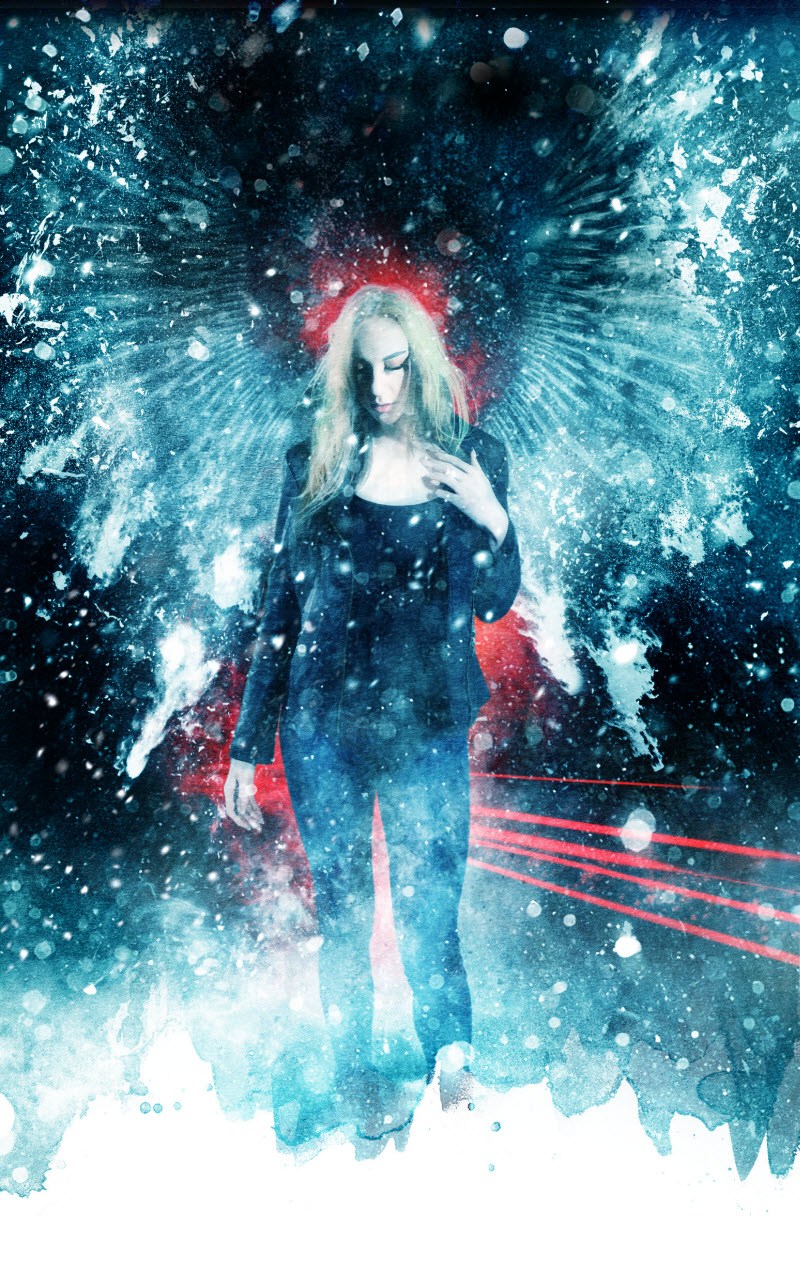
 It is epic fantasy, Jim, but not as we know it.
It is epic fantasy, Jim, but not as we know it. Let’s get the headlines out of the way first. Freshwater was the winner of the Otherwise (formerly Tiptree) Award this year. It was also longlisted for a couple of UK-based literary awards: the Wellcome Book Prize and the Women’s Prize for Fiction. The latter may have been rescinded now that the people running that prize have gone full-on transphobic. So this is a book that is accepted by both genre and literary communities, and is being praised by both.
Let’s get the headlines out of the way first. Freshwater was the winner of the Otherwise (formerly Tiptree) Award this year. It was also longlisted for a couple of UK-based literary awards: the Wellcome Book Prize and the Women’s Prize for Fiction. The latter may have been rescinded now that the people running that prize have gone full-on transphobic. So this is a book that is accepted by both genre and literary communities, and is being praised by both. This review was originally published in issue #133 of Emerald City, dated September 2006. It is reprinted here to mark the death earlier this month of Jan Morris, at the magnificent age of 94.
This review was originally published in issue #133 of Emerald City, dated September 2006. It is reprinted here to mark the death earlier this month of Jan Morris, at the magnificent age of 94. I ended up doing three programme items at this year’s World Fantasy. That’s quite an exceptional thing for a convention that normally has a one-panel-per-person rule, but this year was unusual. The need to go virtual had led to both more panels and fewer potential panellists. I was happy to help out.
I ended up doing three programme items at this year’s World Fantasy. That’s quite an exceptional thing for a convention that normally has a one-panel-per-person rule, but this year was unusual. The need to go virtual had led to both more panels and fewer potential panellists. I was happy to help out. Many years ago, when the Doctor was an old man with a granddaughter rather than a handsome young buck, or a sassy woman, the Daleks were, well, Daleks. Us children loved them. We’d wander around the school playground with our arms stuck out stiffly yelling “EXTERMINATE! EXTERMINATE!!!” for all our little lungs were worth. This did not go unnoticed by people whose job it was to tell stories for money.
Many years ago, when the Doctor was an old man with a granddaughter rather than a handsome young buck, or a sassy woman, the Daleks were, well, Daleks. Us children loved them. We’d wander around the school playground with our arms stuck out stiffly yelling “EXTERMINATE! EXTERMINATE!!!” for all our little lungs were worth. This did not go unnoticed by people whose job it was to tell stories for money. Shortly after the last issue went live, LD Lewis posted a
Shortly after the last issue went live, LD Lewis posted a 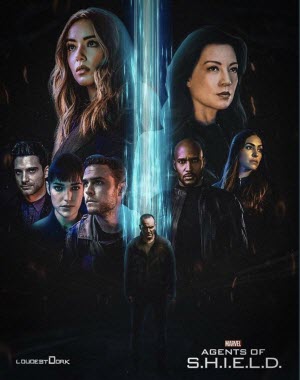 While catching up on The Mandalorian I noticed that season six of Agents of SHIELD was available on Disney, and season seven has now started. It can be a silly show, but after five seasons I had some affection for the characters so I decided to give it a try. I’m glad I did.
While catching up on The Mandalorian I noticed that season six of Agents of SHIELD was available on Disney, and season seven has now started. It can be a silly show, but after five seasons I had some affection for the characters so I decided to give it a try. I’m glad I did.
 This is the October 2020 issue of Salon Futura. Here are the contents.
This is the October 2020 issue of Salon Futura. Here are the contents. Vagabonds
Vagabonds Machine
Machine Lovecraft Country
Lovecraft Country Ring Shout
Ring Shout The First Sister
The First Sister Octocon
Octocon Seven Devils
Seven Devils I was going to use the cover of
I was going to use the cover of  This is a remarkable book. I was hoping to have it in the last issue, but it took me a lot longer to read that I expected. There are two main reasons for that. But before I get to them, a quick introduction.
This is a remarkable book. I was hoping to have it in the last issue, but it took me a lot longer to read that I expected. There are two main reasons for that. But before I get to them, a quick introduction.
 Somewhat to my surprise, Machine is Elizabeth Bear’s thirty-second novel. It shows. This is a second book in her White Space series of space opera books, and it is very assured. There is some possibility that the White Space series is named, in part, for the Sector General books of the legendary James White, and this book introduces us to Bear’s future hospital.
Somewhat to my surprise, Machine is Elizabeth Bear’s thirty-second novel. It shows. This is a second book in her White Space series of space opera books, and it is very assured. There is some possibility that the White Space series is named, in part, for the Sector General books of the legendary James White, and this book introduces us to Bear’s future hospital.
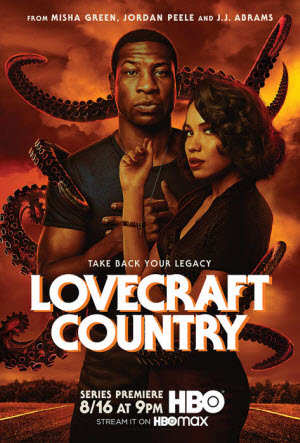 Well, that was interesting. Normally I don’t watch horror on TV. Lovecraft Country was very clearly filmed as horror, but mostly seemed more silly than scary. That, of course, is in no small part due to the fact that trying to represent the unspeakably horrible on screen is always doomed to failure. When we throw in the fact that this is Lovecraft we are talking about, and what he was terrified of was particularly weird, well you have no chance.
Well, that was interesting. Normally I don’t watch horror on TV. Lovecraft Country was very clearly filmed as horror, but mostly seemed more silly than scary. That, of course, is in no small part due to the fact that trying to represent the unspeakably horrible on screen is always doomed to failure. When we throw in the fact that this is Lovecraft we are talking about, and what he was terrified of was particularly weird, well you have no chance.  It is entirely true that Phenderson Djèlí Clark is one of my favourite writers right now. I have loved everything he has done to date, and Ring Shout does not disappoint.
It is entirely true that Phenderson Djèlí Clark is one of my favourite writers right now. I have loved everything he has done to date, and Ring Shout does not disappoint.
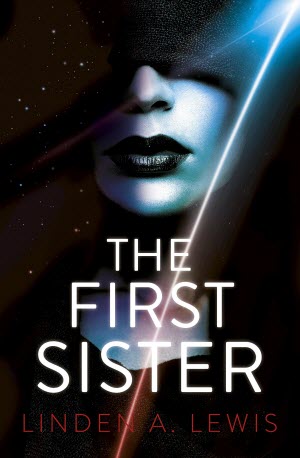 This one is a science fiction debut. It is solar system based, but sufficiently far removed from our time to feel more like space opera than The Quiet War or The Expanse.
This one is a science fiction debut. It is solar system based, but sufficiently far removed from our time to feel more like space opera than The Quiet War or The Expanse.
 For those not familiar with European conventions, Octocon is an annual event held in Dublin. This year it is celebrating its 30th anniversary, which is an impressive achievement. It is a great shame that it was no able to do so in person.
For those not familiar with European conventions, Octocon is an annual event held in Dublin. This year it is celebrating its 30th anniversary, which is an impressive achievement. It is a great shame that it was no able to do so in person. FIYAHcon was not for me. I went along anyway to see how they did, and to listen and learn.
FIYAHcon was not for me. I went along anyway to see how they did, and to listen and learn.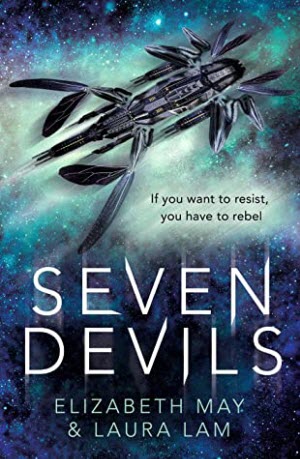 I wish I liked this book more than I do, because parts of it are a lot of fun. Parts of it, however, have me rolling my eyes.
I wish I liked this book more than I do, because parts of it are a lot of fun. Parts of it, however, have me rolling my eyes.

 This is the September 2020 issue of Salon Futura. Here are the contents.
This is the September 2020 issue of Salon Futura. Here are the contents. Piranesi
Piranesi Settling the World
Settling the World Flyaway
Flyaway FutureCon
FutureCon Reclaim, Restore, Return
Reclaim, Restore, Return Shadow in the Empire of Light
Shadow in the Empire of Light The Drowned Country
The Drowned Country Flash Gordon at 40
Flash Gordon at 40 This month’s cover showcases Ben Baldwin’s magnificent art for The Green Man’s Silence, the latest in Juliet McKenna’s hugely successful rural fantasy series. We really are so very lucky to have Ben available to do these covers.
This month’s cover showcases Ben Baldwin’s magnificent art for The Green Man’s Silence, the latest in Juliet McKenna’s hugely successful rural fantasy series. We really are so very lucky to have Ben available to do these covers.
 In the beginning was the world, and the world was the House: vast, halls without end, and on three levels. The lower level was the domain of the sea, prone to violent tides that could flood the upper levels, but also full of fish, the only source of food. The upper level was the domain of birds and clouds, the source of rain, reachable only by dangerous climbs. In the middle level there lived a man. We shall call him Piranesi, though he is sure that isn’t really his name, it is just the name that The Other calls him.
In the beginning was the world, and the world was the House: vast, halls without end, and on three levels. The lower level was the domain of the sea, prone to violent tides that could flood the upper levels, but also full of fish, the only source of food. The upper level was the domain of birds and clouds, the source of rain, reachable only by dangerous climbs. In the middle level there lived a man. We shall call him Piranesi, though he is sure that isn’t really his name, it is just the name that The Other calls him.
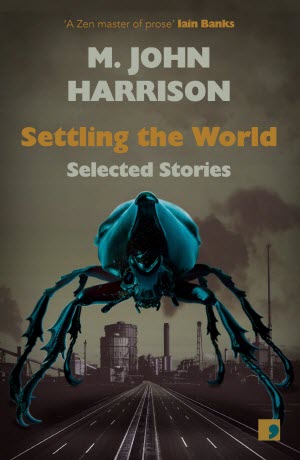 In her forward to this new collection by M. John Harrison, Jennifer Hodgson says, “Harrison is always telling us the same story.” It is an odd thing to say when you are trying to persuade people to read a book, but in a way it is true. In part that’s because Harrison, like many writers, uses short fiction as a test bed for longer works. It is a bit like how an artist will do character sketches before committing to a massive piece on canvas. But also Harrison has particular interests.
In her forward to this new collection by M. John Harrison, Jennifer Hodgson says, “Harrison is always telling us the same story.” It is an odd thing to say when you are trying to persuade people to read a book, but in a way it is true. In part that’s because Harrison, like many writers, uses short fiction as a test bed for longer works. It is a bit like how an artist will do character sketches before committing to a massive piece on canvas. But also Harrison has particular interests.
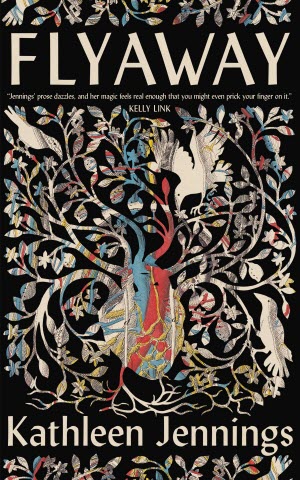 I’ve been familiar with Kathleen Jennings’ art for some time, but only vaguely aware that she writes as well. That’s all changed now. I think she’s done some short fiction, but Flyaway is her first book-length publication, and it is incredibly assured.
I’ve been familiar with Kathleen Jennings’ art for some time, but only vaguely aware that she writes as well. That’s all changed now. I think she’s done some short fiction, but Flyaway is her first book-length publication, and it is incredibly assured. 
 There have been lots of online conventions since the pandemic happened, but in my opinion the most interesting of them has been
There have been lots of online conventions since the pandemic happened, but in my opinion the most interesting of them has been  One of the events that I would love to go to, but probably never will, is the Bocas Lit Fest. It is the Caribbean’s premier literary event, taking place each year in Port of Spain, Trinidad. This year it was virtual, but I didn’t find out until too late and anyway I suspect there would have been time zone issues. There is a recording available
One of the events that I would love to go to, but probably never will, is the Bocas Lit Fest. It is the Caribbean’s premier literary event, taking place each year in Port of Spain, Trinidad. This year it was virtual, but I didn’t find out until too late and anyway I suspect there would have been time zone issues. There is a recording available 
 Declaration of interest here: Jane Routley is a dear friend from my days living in Melbourne. I reviewed several of her books in Emerald City. She rather fell off the radar for a while, but she’s recently signed up with top British agent, John Jarrold, and she has a new book out from Solaris.
Declaration of interest here: Jane Routley is a dear friend from my days living in Melbourne. I reviewed several of her books in Emerald City. She rather fell off the radar for a while, but she’s recently signed up with top British agent, John Jarrold, and she has a new book out from Solaris.
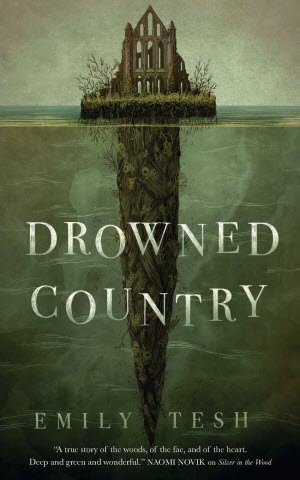 When I read Silver in the Wood I was a bit thrown by an apparent change in the book. It started off as a serious and spooky woodland-based fantasy, and then morphed into a gay romance set against a background of a Victorian-era monster hunter story. With The Drowned Country I knew exactly what to expect, and enjoyed the book a lot more as a result.
When I read Silver in the Wood I was a bit thrown by an apparent change in the book. It started off as a serious and spooky woodland-based fantasy, and then morphed into a gay romance set against a background of a Victorian-era monster hunter story. With The Drowned Country I knew exactly what to expect, and enjoyed the book a lot more as a result.
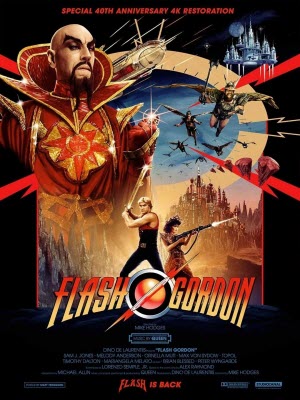 With the dominance of Marvel, and to a lesser extent DC, in modern cinema, it is easy to forget that these are by no means the only comic book characters to have made it to the big screen. Johnny Weissmuller is by far the most famous actor to portray Tarzan, but he was only the 6th man to do so. However, in terms of entertainment for kids, Universal’s serialised adventures of Flash Gordon, starring Buster Crabbe, were by far the biggest superhero stories of their day. And because this was before we had a TV in every home, kids would go to the cinema to watch them.
With the dominance of Marvel, and to a lesser extent DC, in modern cinema, it is easy to forget that these are by no means the only comic book characters to have made it to the big screen. Johnny Weissmuller is by far the most famous actor to portray Tarzan, but he was only the 6th man to do so. However, in terms of entertainment for kids, Universal’s serialised adventures of Flash Gordon, starring Buster Crabbe, were by far the biggest superhero stories of their day. And because this was before we had a TV in every home, kids would go to the cinema to watch them.
 This is the August 2020 issue of Salon Futura. Here are the contents.
This is the August 2020 issue of Salon Futura. Here are the contents. Unconquerable Sun
Unconquerable Sun Harrow the Ninth
Harrow the Ninth Lovecraft Country
Lovecraft Country Worldcon – Wellington
Worldcon – Wellington NASFiC – Columbus
NASFiC – Columbus The Space Between Worlds
The Space Between Worlds Selkie Summer
Selkie Summer Supergirl Season 5
Supergirl Season 5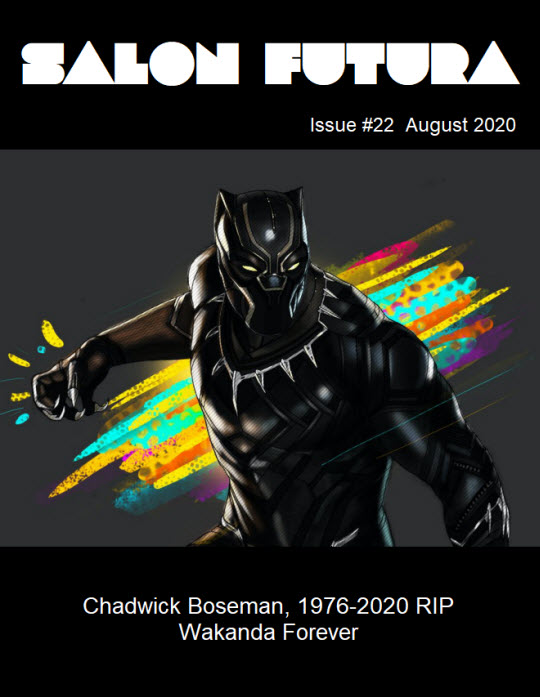 For this issue’s cover I wanted to pay tribute to the late Chadwick Boseman. That meant searching the internet for re-usable pictures of Black Panther. The image I settled on is by Omar Al Farooq Pn. You can find the original
For this issue’s cover I wanted to pay tribute to the late Chadwick Boseman. That meant searching the internet for re-usable pictures of Black Panther. The image I settled on is by Omar Al Farooq Pn. You can find the original 
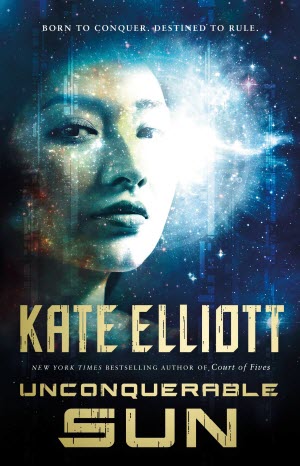 So, a book that is basically a gender-swapped Alexander the Great Space Opera. Do you think that might appeal to someone who writes Amazons in Space stories? If you do then you would be entirely correct. To quote KJ Charles’ legendary comment about The Green Man’s Heir, it is so far up my street that it could be my house.
So, a book that is basically a gender-swapped Alexander the Great Space Opera. Do you think that might appeal to someone who writes Amazons in Space stories? If you do then you would be entirely correct. To quote KJ Charles’ legendary comment about The Green Man’s Heir, it is so far up my street that it could be my house.
 It appears that the Emperor’s plan has worked. Of the eight necromancers who came to Canaan House, two have succeeded in ascending to Lyctorhood. They are Ianthe Tridentarius, and of course Harrowhark Nonagesimus, who is the central character of this book. Now the two young Lyctors are ready to join their remaining elder colleagues in the great war that the Emperor is waging against, well, something. They have a lot to learn before being plunged into battle.
It appears that the Emperor’s plan has worked. Of the eight necromancers who came to Canaan House, two have succeeded in ascending to Lyctorhood. They are Ianthe Tridentarius, and of course Harrowhark Nonagesimus, who is the central character of this book. Now the two young Lyctors are ready to join their remaining elder colleagues in the great war that the Emperor is waging against, well, something. They have a lot to learn before being plunged into battle.
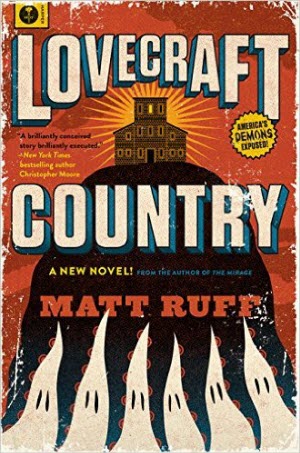 As I write this issue, the TV series is only two episodes old. It seems to be going down very well, despite the obvious drawback that trying to depict Unspeakable Horror on a TV screen is going to end up looking silly. But inevitably few of the people commenting on it (including some writing reviews in paying venues) have any idea that it is based on a novel.
As I write this issue, the TV series is only two episodes old. It seems to be going down very well, despite the obvious drawback that trying to depict Unspeakable Horror on a TV screen is going to end up looking silly. But inevitably few of the people commenting on it (including some writing reviews in paying venues) have any idea that it is based on a novel.
 It all seems so very long ago now. That’s one of the disadvantages of having a monthly publication. If you hit the wrong point in the cycle, everyone else has had their say before you. Of course I did have my say on my blog. You can find my thoughts on the Hugo Award Ceremony fiasco
It all seems so very long ago now. That’s one of the disadvantages of having a monthly publication. If you hit the wrong point in the cycle, everyone else has had their say before you. Of course I did have my say on my blog. You can find my thoughts on the Hugo Award Ceremony fiasco